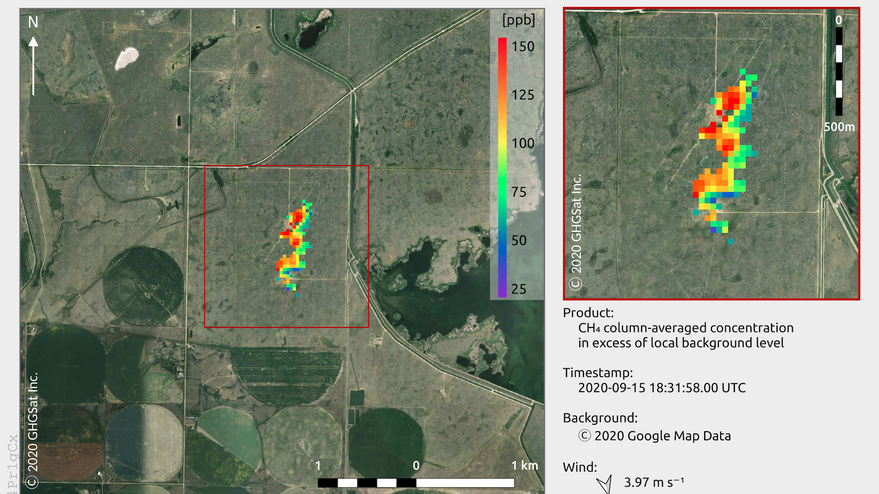Products You May Like
SAN FRANCISCO — GHGSat, the Canadian firm preparing to launch a constellation of methane-monitoring satellites, announced Oct. 8 that the sensor on its Iris satellite launched in early September detects methane emissions five times as well as Claire, its predecessor.
GHGSat tested the Iris sensor by flying the satellite over a controlled methane release in Alberta, Canada. The company compared the sensor data with measurements captured by sensors on the ground and in an aircraft, according to an Oct. 8 news release.
“Satellites are complex devices and it takes time to fully characterize instruments and optimize processing software to filter out noise from the signal,” GHGSat CEO Stephane Germain said in a statement. “We have just begun that process with Iris. We expect Iris to attain 10 times better performance than Claire and are now even more confident that we will validate that performance in the coming weeks.”
GHGSat launched Iris Sept. 2 on an Arianespace Vega rocket from the Guiana Space Center in Kourou.
GHGSat plans to launch Hugo, another methane-sensing satellite, later this year. By the end of 2022, the company plans to launch nine additional satellites.
GHGSat’s goal is to detect and quantify methane emissions from sources as small as individual oil and gas wells. “No other commercial operator or state-funded space organization can do this,” according to the GHGSat news release.
GHGSat also announced an agreement Oct. 6 with ABB Measurement & Analytics Canada to manufacture sensors for three methane-monitoring satellites.
ABB, a multinational corporation, built sensors for government satellites for decades before working with GHGSat, its first commercial space customer.
“We are currently seeing extensive innovation brought about by private initiatives in the space industry,” Marc Corriveau, ABB Measurement & Analytics Canada general manager, said in a statement. “At ABB we have built up a unique heritage in this sector over the decades helping scientists better understand the composition and evolution of our atmosphere. Our expertise in space optics and sensor development for industrial applications means that we are exceptionally well positioned to play a key role in GHGSat-C2.”
GHGSat-C2 is also called Hugo.
